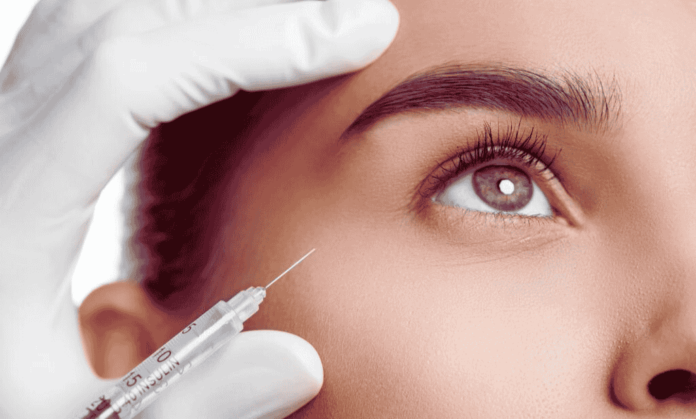Botox has taken the world by storm as a go-to solution for smoothing wrinkles and achieving a youthful appearance. But how long does Botox last? That’s what we’re here to uncover. Whether you’re considering Botox for the first time or you’re a seasoned pro, understanding its longevity can help you plan your treatments better.
What Is Botox?
Botox is a purified form of botulinum toxin, a protein that temporarily relaxes muscles. Don’t let the “toxin” part scare you; it’s been safely used in medicine for decades.
How Does Botox Work?
Botox works by blocking nerve signals to targeted muscles. This temporary paralysis helps smooth wrinkles and fine lines caused by repeated muscle movement, like frowning or squinting.
Why Do People Use Botox?
The reasons vary! Most people opt for Botox to reduce the appearance of wrinkles, but it’s also used for medical conditions like migraines, excessive sweating, and muscle spasms.
Botox Longevity Overview
Typical Duration of Botox Effects
On average, Botox effects last about 3 to 4 months. However, some lucky individuals may see results lasting up to 6 months, while others might notice the impact fading after just 2 months.
Factors That Influence Botox Longevity

Injection Site
Different areas of the face and body respond differently to Botox. For example, forehead treatments might last longer than those for crow’s feet.
Individual Metabolism
Fast metabolisms can break down Botox quicker. So, if you burn calories like a furnace, your Botox might not last as long.
Dosage Administered
A higher dosage can prolong the effects, but your injector will aim for a balance to ensure natural-looking results.
First-Time Users vs. Regular Users
First-time users may notice Botox wearing off faster. Regular treatments often “train” the muscles, leading to longer-lasting effects.
Different Areas and Their Results

Forehead Lines
Botox on the forehead typically lasts 3 to 4 months, providing a smooth, refreshed appearance.
Crow’s Feet
These fine lines around the eyes may fade for about 2 to 3 months, depending on your expression.
Frown Lines
Frown lines between the eyebrows, also known as the glabellar region, tend to hold Botox for around 3 to 4 months.
Other Cosmetic and Medical Uses
Treatments for medical conditions, like migraines, can last longer—sometimes up to 6 months.
How to Extend the Effects of Botox
Follow Post-Treatment Guidelines
Avoid rubbing the treated area, intense exercise, and lying down flat for a few hours after your session.
Maintain a Healthy Lifestyle
Hydrate, eat a balanced diet and avoid smoking. These habits can make a surprising difference.
Combine with Other Treatments
Consider pairing Botox with complementary treatments like dermal fillers for enhanced results.
Schedule Regular Maintenance Appointments
Keeping up with Botox appointments ensures you maintain a consistent, youthful look.
Side Effects and Safety Considerations
Common Side Effects
Temporary bruising, redness, and swelling at the injection site are typical but fade quickly.
Rare but Serious Risks
Although rare, some may experience drooping eyelids or difficulty swallowing. Always choose a licensed professional to minimize risks.
When to Contact a Doctor
If you notice severe side effects or symptoms lasting longer than expected, consult your doctor immediately.
Who Should Avoid Botox?

Pregnant or Breastfeeding Individuals
It’s better to steer clear of Botox during pregnancy or while nursing due to insufficient safety data.
Those With Certain Medical Conditions
If you have a neuromuscular disorder, discuss alternatives with your doctor.
Cost of Botox Treatments
Factors That Affect the Cost
The price varies based on location, injector expertise, and the number of units needed.
Is Botox Worth the Investment?
Many find Botox worth it for the confidence boost and youthful appearance it provides.
Alternatives to Botox
Dermal Fillers
Fillers target deeper wrinkles and add volume, offering a complementary approach.
Topical Anti-Aging Products
Over-the-counter creams and serums can provide subtle improvements for mild wrinkles.
Non-Invasive Treatments
Laser resurfacing and microdermabrasion are excellent non-Botox options for rejuvenation.
Conclusion
Botox offers a fantastic solution for reducing wrinkles and addressing certain medical conditions. While its effects are temporary, understanding what influences its longevity and how to extend it can help you maximize your investment. Always consult with a licensed professional to ensure the best results.
FAQs
How soon do Botox results appear?
Results typically appear within 3 to 5 days, with full effects visible after two weeks.
Can Botox stop working over time?
Yes, repeated use can sometimes lead to resistance. Taking breaks can help reset its effectiveness.
Is Botox painful?
Most people report minimal discomfort, often described as a quick pinch.
What age should you start Botox?
Preventative Botox is popular in the late 20s to early 30s, but it’s never too late to start.
Can you reverse Botox if you don’t like the results?
Unfortunately, no. You’ll need to wait for the effects to wear off naturally, which usually takes a few months.
For more information visit my blog:-zisbrand.com

